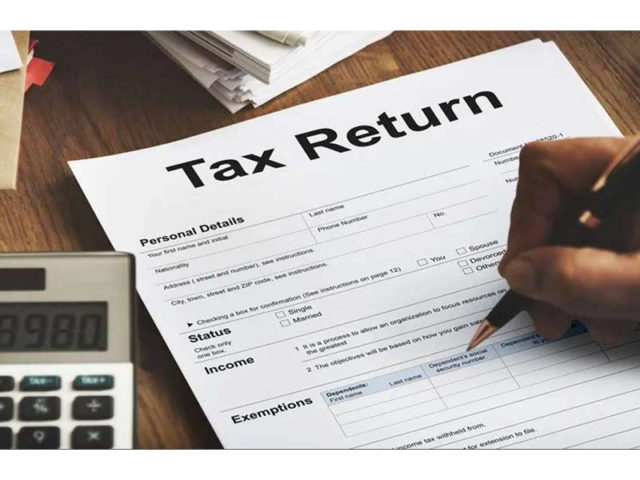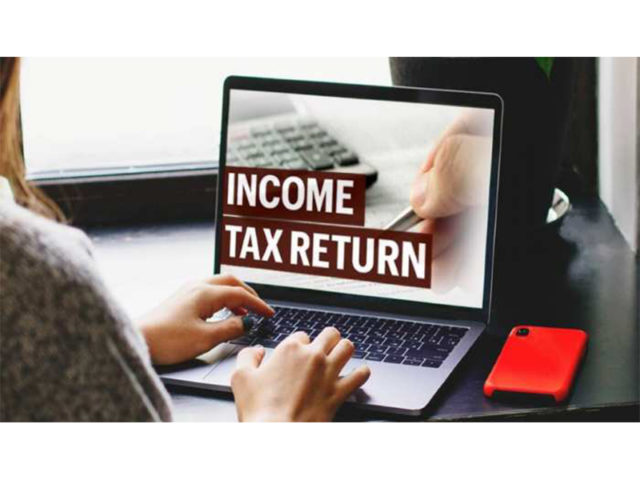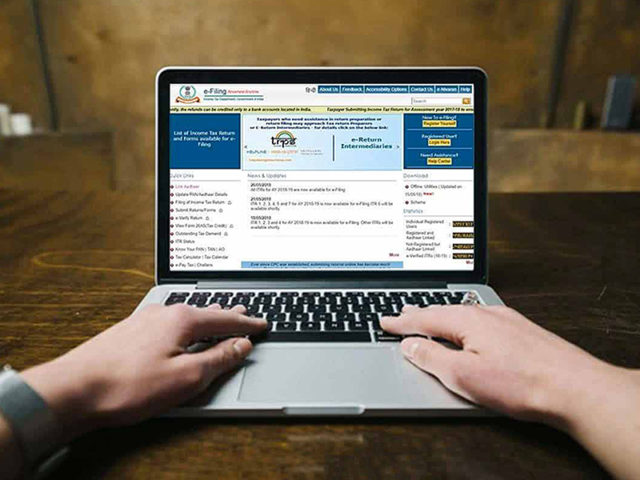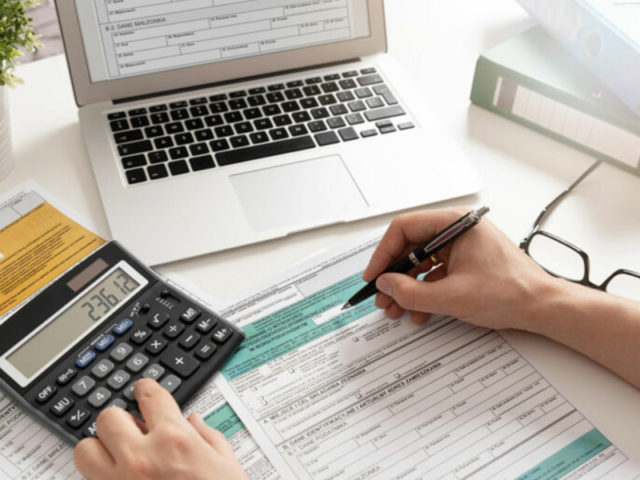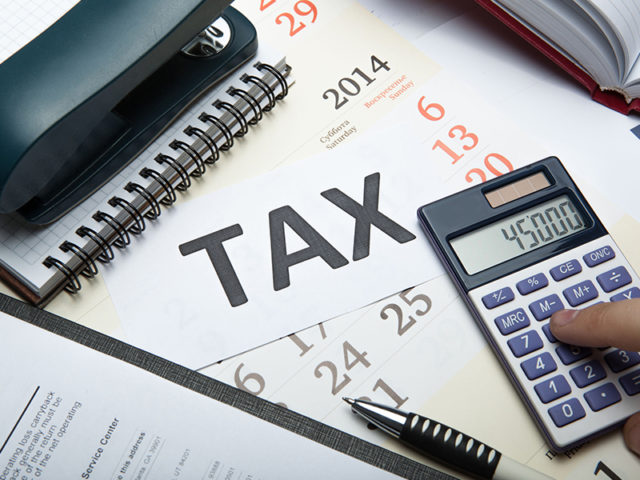The COVID-19 pandemic has pushed the deadline for ITR filing for the year 2021 to September 30th, causing many to let out a sigh of relief. Filing taxes is one of the most complicated tasks, especially if you are new to the scene. And while chartered accountants and your dad might seem like an easy way out to get your taxes filed without you needing to lift a finger, it’s time to learn. Today, the procedure to file ITR online is available and has become a fairly easy one to follow.
TC46 connected with CA Nikhita Khurana of BFS Wealth to know the easiest and simplest way to file ITR in India. Here, she shares some vital information about ITR, a detailed guide on filing for it and how to avoid some common mistakes.
1. ITR and Indian laws that address the filing procedure and deadline
ITR is the short form of Income Tax Return. It is a form in which the taxpayers file information about the income earned during the previous Financial Year (FY) from 1st April to 31st March and the tax applicable on such income to the Income Tax Department. This is governed by the Income Tax Act, 1961.
The Department has notified 7 various forms, to date:
- ITR 1
- ITR 2
- ITR 3
- ITR 4
- ITR 5
- ITR 6
- ITR 7
Every taxpayer should file the ITR to declare his/her income earned, depending on the Sources of Income of the Taxpayer, on the basis of categories like Individuals, HUF, Company, Partnership and the amount earned and taxes should be paid on the same. ITR should be filed on or before the specified due date. The Forms are available online on the Income Tax portal.
2. Every taxpayer should be aware of certain basic provisions and rules
In India, it is mandatory to file income tax returns (ITR) if any of the conditions mentioned below are applicable to you:
- If the total income for the previous FY is more than the basic exemption limit and the Assessee is Resident in India, as specified below:
| Particulars | Amount |
| For Individuals below 60 years | Rs 2.5 Lakh |
| For Individuals above 60 years but below 80 years | Rs 3.0 Lakh |
| For individuals above 80 years | Rs 5.0 Lakh |
- To claim Refund from the IT Department on account of TDS deducted.
- If a resident person holds any asset located outside India or is a beneficiary in any asset located outside India, it is compulsory to file returns.
- A company or a firm is required to submit its return of income, irrespective of profit or loss.
- Any other person as given in the Act.
3. Registering on the e-filing website of the income tax department is easy
- Firstly a person needs to obtain a Permanent Account Number (PAN) by filing the required details under the prescribed form.
- After that, visit the E-Filing Portal of the Income Tax Department.
- Click on the box – Register Yourself on the homepage.
- Select user type as Individual and click on continue. You will have to provide basic details like PAN, Surname, First Name, Date of Birth, Residential Status and click on continue.
- Fill in the required details like address, contact details. After that, the person will receive Two OTPs on Mobile number and Email Id. After the OTPs are correctly entered, the person can complete the registration process.
4. Detailed step-by-step guide on filing an income tax return (ITR)
- First, the taxpayer should take his bank statement and cash in hand and compute the total annual income earned by him.
- There are 5 heads of income:
- Income from Salaries
- Income from House Property
- Income from Capital Gains
- Income from Business/ Profession
- Income from Other Sources
- The taxpayer should segregate his income in these heads and accordingly choose the ITR from the IT Portal which is applicable to him.
- Visit the income tax e-filing website. Click on IT Return Preparation Software. Forms can be filled in Java version or Excel versions.
- He should check the form 26AS to get details about the TDS deducted.
- After opening the downloaded form, the taxpayer is required to fill in the information needed in the forms.
- Then Validate the information entered in the form.
- Click on Generate XML after successful validation of the form.
- Then Login to the Portal with login ID and Password. You land on the dashboard page.
- Click on the E File button. Click on the Income Tax Return option. Provide the details required. Click on upload XML.
- After the XML is attached. Click on the Submit button.
- The last step is to verify the return. A person can use Aadhar OTP or EVC generated via net banking or send the physical acknowledgement copy to the CPC, Bengaluru.
5. Form 16 checklist when filing ITR
Form 16 contains the information for filing ITRs for taxpayers who have income under the head Salaries. It is a certificate issued by Employers to their Employees. It contains a detailed summary of the salary paid to the employee and the TDS deducted. Employers have to issue it every year on or before 15th June of the next year, immediately after the financial year in which the tax is deducted. Form 16 has two components – Part A and Part B.
Once the employee receives Form 16, he should check the PAN, verify all the personal details and the amount of salary received during the year and TDS deducted during the year. While filing the ITR, the information required is :
- The break up of deductions under Section 80C
- Deduction under section 80D
- TDS deducted, total taxable salary
- Tax payable or refundable depending on the information disclosed by the employee
6. Filing ITR without Form 16
If a taxpayer wants to file his return as a salaried employee, it is important to get Form 16 from the Employer. The employer has to give this form to all his employees. Even if it is not available, a person can file his return.
Steps to file the return without Form 16:
- The employee should figure his net taxable salary from the payslips received.
- He should download Form 26AS from the IT Portal to check whether all the TDS deducted is being reflected. He should Check 26AS with the TDS deducted by the employer.
- If he has income from Other Sources like FD Interest, Bank Interest, he should compute that. Banks deduct TDS u/s 194A for interest received on FDs.
- He should check income from House Property if applicable.
- He should claim deductions under Chapter VI A.
- He should determine whether to pay taxes or claim a refund depending on the computation arrived at.
- He should upload the ITR.
7. Common mistakes made while filing taxes and ways to avoid them
- Selecting the wrong ITR.
- Filling up wrong/incorrect information.
- 26AS doesn’t match with the TDS claimed in the return
- Not disclosing all sources of Income
- Incorrect filling of forms
- Not paying Advance Tax/ Self Assessment Tax
- Filing the form with ‘will verify later’ and not verifying on time or if physical acknowledgement has to be sent, not sending the same.
- Interest on NSC is tax-free.
- Claiming wrong deductions or filling the information in wrong columns.
- Missing the dates of filing returns.
A taxpayer needs to be vigilant, fill the form with the utmost care, keep himself updated with the latest developments and changes, and consult an expert if required.
8. Seeking professional help to file taxes
Just like you visit a doctor when you are sick and go to a lawyer for legal opinions, similarly, I feel, it is better to consult a professional. A good professional will give you genuine advice and help you in good tax planning as in today’s scenario a lot of salaried people have multiple sources of income. So it is better to consult a Chartered Accountant or tax expert so that one does not receive a notice from the Income Tax Department and can comply with all income tax rules.
Though the tax department has come up with an alternate tax regime with the idea that filing can be simplified, still many people may not be aware of tax laws in this ever-changing scenario and mess up the ITR Filing.
Tax experts like chartered accountants are well versed in tax-related documentation, yearly updates and what will work for a particular individual. So the best thing is to take professional help.
9. Using an income tax calculator to compute tax liability
The Income Tax Department has made a tax calculator. You can fill in your data as applicable and get the tax liability. But this calculator gives a basic and quick tax liability. It does not take into account detailed information so it does not give the correct tax calculation.
A lot of other sites also offer tax calculators and depend from site to site. Filing the return gives the correct tax calculation. However, one can use it to try and get an idea about taxes payable on the income earned. It is free online, convenient and easy to use. One can try it.
10. Know the latest income tax slabs and rates for women
There is no separate slab for women
A slab is given age-wise.
- For Resident Individual less than 60 years of age
- Upto Rs 2,50,000 – Nil
- Rs 2,50,000 – Rs 5,00,000- 5% of (total income minus Rs 2,50,000)
- Rs 5,00,000 – Rs 10,00,000- Rs 12500 + 20% of (Total Income minus Rs 5,00,000)
- Above Rs 10,00,000 – Rs 1,12,500 + 30% of (Total Income minus Rs 10,00,000)
Health and Education Cess is charged at 4% of income tax.
There is Also Surcharge applicable for Income above Rs 50,00,000
Rebate under Section 87A is available for an individual whose net income does not exceed Rs 5,00,000. The amount of rebate is 100% of income tax or Rs 12,500, whichever is less.
For Resident Individuals between 60 years but less than 80 years of age, the basic exemption limit is Rs 3,00,000.
For Resident Individuals more than 80 years of age, the basic exemption limit is Rs 5,00,000.


